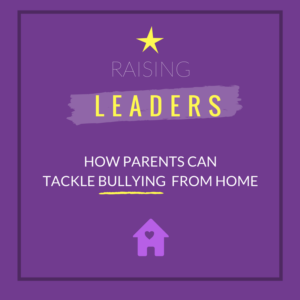
During this crazy time, parents are dealing with multiple issues. Academics get a lot of well- deserved national attention but how’s their confidence? Are they one of the over 6 million kids who have experienced a bullying issue?
Being home and physically away from the source of the bullying problem may be an unpredictable silver lining for young kids. In some cases, though, a mean situation may still be holding them back.
Signs to look for while you’re all under the same roof:
A Miraculous Cure
- Your child had chronic complaints of stomach aches or other physical ailments every morning before going to school. And now they’re at home and magically cured.
The physical complaints could be attributed to a few things, including: the school work was bothering them; or they don’t like their teacher; or perhaps they are being treated poorly by a peer. (Most teachers are good with kids but the sad reality is some are not. Whether it’s a peer or an adult, kids need to feel emotionally and physically safe.)
What Friends?
- Your child doesn’t necessarily miss “friends.”
When friendships go sour, they don’t often tell us for fear we won’t understand.
Frustration
- Your child is angry and they take it out on you or a sibling.
There’s usually a reason for anger. If you’re at wit’s end trying to handle your child’s angry outbursts, Laura Markham, Ph.D offers some great tips.
These are just three things. Although there are many more, the general rule of thumb is to pay attention to any changes in behavior.
(Note: Some of these behavioral changes may also be a result of some anxiety over COVID-19. Click here for tips on how to talk to your kids in an age appropriate way.)
Now what?
Get to the bottom of it. According to the Youth Voice Project, nearly half of the over 13,000 kids (kindergarten through high school) who participated in the research said that the most effective adult action was listening. (And please remember, for the child who doesn’t say much, listening could mean observing.)
But to be realistic, more time under the same roof may not mean more time to listen. You may be working, home schooling, providing three meals a day (and snacks!) while trying to cope. It’s already a full plate (pun intended).
During a more relaxed moment, whether it’s during your coffee time in the morning, a short play break, over lunch or hanging out, start up a conversation. According to Dr. Barbara Greenberg, kids don’t always like direct questions so it may be easier for them to respond to questions like:
What part of school do you miss the most?
What do you look forward to the most?
Who is the nicest person in your class?
The answers to questions like these may give you clues.
Bully, Victim, Bystander: Labels to Avoid
Although we use the word bully often, they understand the word mean more. We also don’t ever want to label a child. A child who is exhibiting mean behavior can grow out it, if helped, a child on the receiving end can learn to rise above it and a bystander can learn to be an upstander by contributing to the solution.
Your Presence is their Present
If their answers give you the impression that they’re having a problem, give them your support. A simple, “you don’t deserve that” will go a long way to help them feel valued. Most important? Make sure they keep talking with you. Don’t over-react or under-react.
Of course, if all of this persists when they go back to school, it’s time to assess how big of a problem they’re experiencing and talk to the teacher. If they are taking it out on their siblings, that has to be corrected. Pronto.
While they’re home you have time to strategize but my guess is that your hugs, attention and perhaps a course correction will be just what they need right now.
Your New Best
It’s impossible to be perfect, especially now. What kids want is to be seen and heard even if it has to be between virtual meetings. Easier said than done, I know. Remember, we don’t have to be perfect. We just need to be present. It’s our “new best.”
To be continued…





